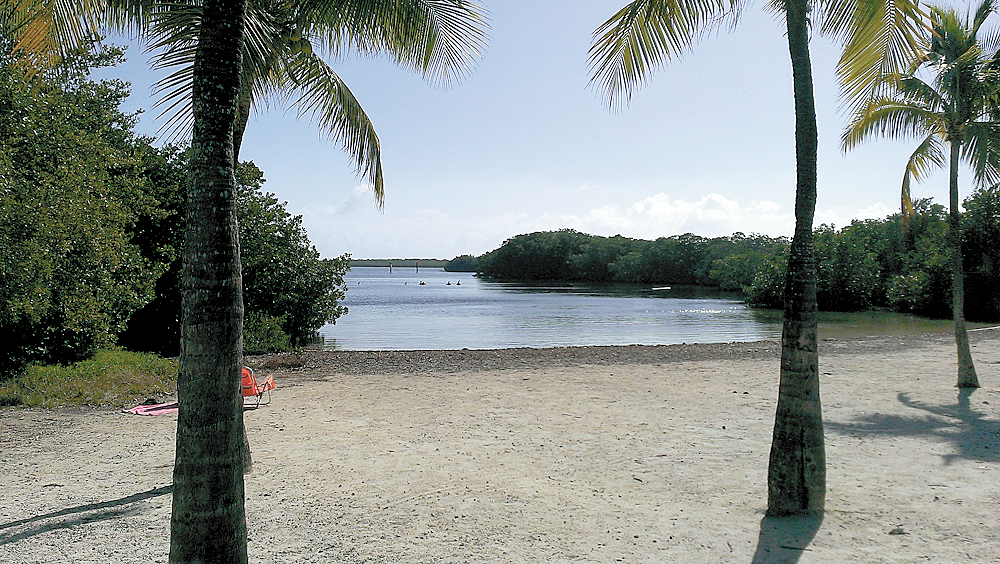March 5, 2015
The Sand Between My Toes
“In every out thrust headland, in every curving beach, in every grain of sand there is the story of the earth.” – Rachel Carson
My love affair with Florida began as a young child. With the car-top luggage rack full, my dad would drive our station wagon out of the driveway of our St. Louis home and head south. In the days before seat belts, my sister and I had the entire back end to sleep and play. We entertained ourselves by reading books, playing games, and gazing out the window at the ever changing scenery. When I saw the Spanish moss dangling from the trees I knew we were not far from our Florida destination. My favorite moment, however, was when I could kick off my shoes and feel the sand between my toes.
I have traveled back to Florida many times since those vacations of my youth and never tire of the Florida landscape. I have visited beaches on both coasts from Panama City to Key West, and each one is uniquely different with sand rarely the same color or texture. So what makes each beach so unique and where did all this sand come from? Here is what my research revealed.
Much of the sand on Florida beaches is made up of quartz crystals produced by the weathering of continental land masses like the Appalachian Mountains. The quartz is washed down America’s great rivers into the Atlantic and the Gulf of Mexico where it is carried onto the beaches by water currents and waves. Combined with the sparkling quartz crystals may be shell fragments and coral, limestone, fossils and organic matter, which lend different colors to the sand.
Northwest Florida has some of the purest, whitest sand anywhere in the state. Its dazzling crystals are nearly pure quartz, resulting in soft, fluffy sand that is a pleasure to walk on. Last year, Gary and I visited the “Emerald Coast” near Destin. We stayed in the beach town of Watercolor on Santa Rosa Beach. The sand was so pure and so soft that only a few tiny flecks of dark minerals could be seen in the powdery white sand.
 Further south, the sandy beaches on the peninsular Gulf coast begin just above Tampa Bay and extend south to Marco Island. The sand on these beaches varies just slightly in color, but sand composition can fluctuate greatly, even on beaches in the same area. Northern Siesta Key has sand that is nearly pure white quartz, while the southern part of the island has darker sand mixed with shell. The black and gray sand beaches near Venice are created when fossil fragments mix in with the white sand creating a kaleidoscope of white to gray to black shades of sand.
Further south, the sandy beaches on the peninsular Gulf coast begin just above Tampa Bay and extend south to Marco Island. The sand on these beaches varies just slightly in color, but sand composition can fluctuate greatly, even on beaches in the same area. Northern Siesta Key has sand that is nearly pure white quartz, while the southern part of the island has darker sand mixed with shell. The black and gray sand beaches near Venice are created when fossil fragments mix in with the white sand creating a kaleidoscope of white to gray to black shades of sand.
Even on a specific beach, the sand can vary. Near the water, the grains may be larger and mixed with shell fragments, while near the dunes the sand will more likely be much finer-grained and lighter in color. At certain times of the year, depending on water currents and surf, some beaches—especially southwest coast beaches like Sanibel—have large piles of broken shell up to and just above the high tide line. This broken and worn shell refuse is referred to as “shell hash” and may be a foot or more deep. The shells can make walking with bare feet difficult. But even those beaches usually have soft sand a bit higher on the beach. Sanibel Island has long been a destination for shell seekers. I recently gathered up several beautifully colored shells for my granddaughters.
Fort Myers Beach angular quartz sand grains are excellent for sand sculpting. Every fall master sculptors descend upon Fort Myers Beach and use over 1000 tons of sand to create some of the most elaborate and amazing temporary art seen in Florida.
Atlantic beaches seem to have a greater diversity of sand types than the Gulf beaches, and you’ll find fewer beaches on the Atlantic with pure white sand. Cocoa Beach has light gray-brown colored sand and is one of the most popular family vacation beaches in Florida. Just a short drive north of Kennedy Space Center, you’ll find steeper beaches with tiny light brown shell fragments mixed in with the quartz, resulting in sand that looks brownish. Sand with larger shell fragments just doesn’t pack as firmly as sand with a larger percentage of quartz crystals. Ormond Beach and Daytona Beach have sand that, here and there, in patches, looks quite orange. It isn’t the sand that is orange, but the coquina shell fragments that have absorbed the rusty color of iron oxide. Right now as I sit on Jensen beach, the sand beneath my feet is course and brown with tiny bits of shells that have been pulverized by the thunderous Atlantic waves.
We recently spent two weeks in one of my favorite spots, the Florida Keys. Although pictures of the keys boast palm trees and beautiful sandy beaches, it might surprise you to know that the few beaches you find in the Florida Keys are man -made. Beach sands along the southeast Florida coast and the Keys is often composed more of coral and mollusk shell fragments than of quartz. The Keys has the longest living coral reef in America, running 221 miles from Key Largo to Dry Tortugas National Park. The coral reefs protection keeps the waves from crashing ashore preventing beach formations. The sand that is found in the Keys is actually excrement or really small pieces of coral which the parrot fish spend their time nibbling during the day. It eats seaweed and polyps from the surface but, at the same time and because of its beaked mouth, it gets a ‘plus’ of hard coral which it breaks up with the teeth in its throat. The parrot fish can’t metabolize this coral so it ‘throws it overboard’ in the form of grains. Just one parrot fish can produce over 200 pounds of white sand every year! Imagine, after thousands upon thousands of years of, the amount of white sand these colorful fish have produced!
Next time you are at the beach I hope you will take a closer look at the sand between your toes to see what it is made of. Which type of sand makes the best beach? I’ll let you decide!
“Some beach somewhere….there’s a big umbrella casting shade over an empty chair. Palm trees are blowing, warm breeze is blowing, I picture myself right there….on a beach somewhere! – Jimmy Buffet
Mary Schricker Gemberling
Mary, a former educator and Seniors Real Estate Specialist, is the author of two books, The West End Kid and Labor of Love; My Personal Journey through the World of Caregiving (available at www.amazon.com )
Filed Under: Humor
Trackback URL: https://www.50pluslife.com/2015/03/05/the-sand-between-my-toes/trackback/



